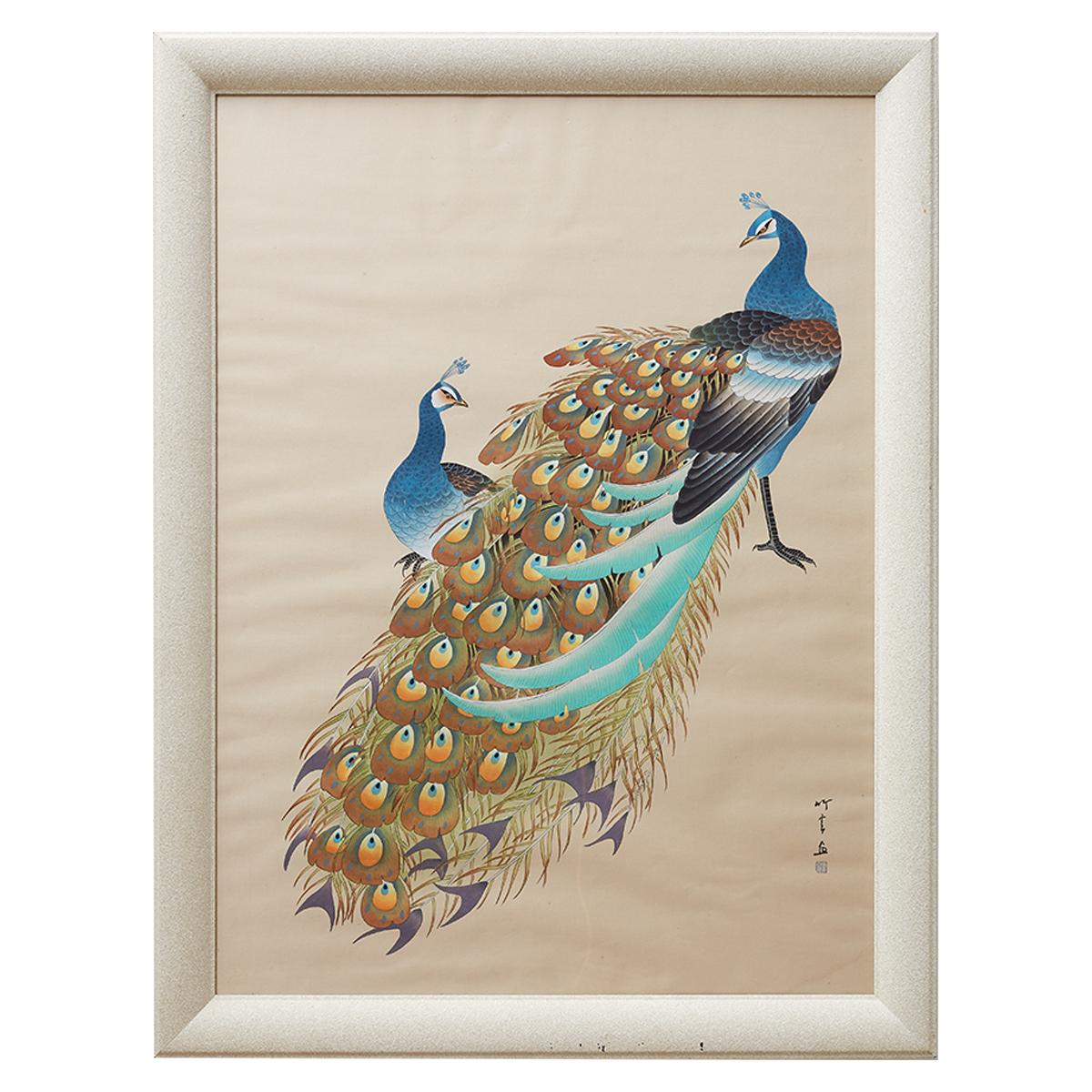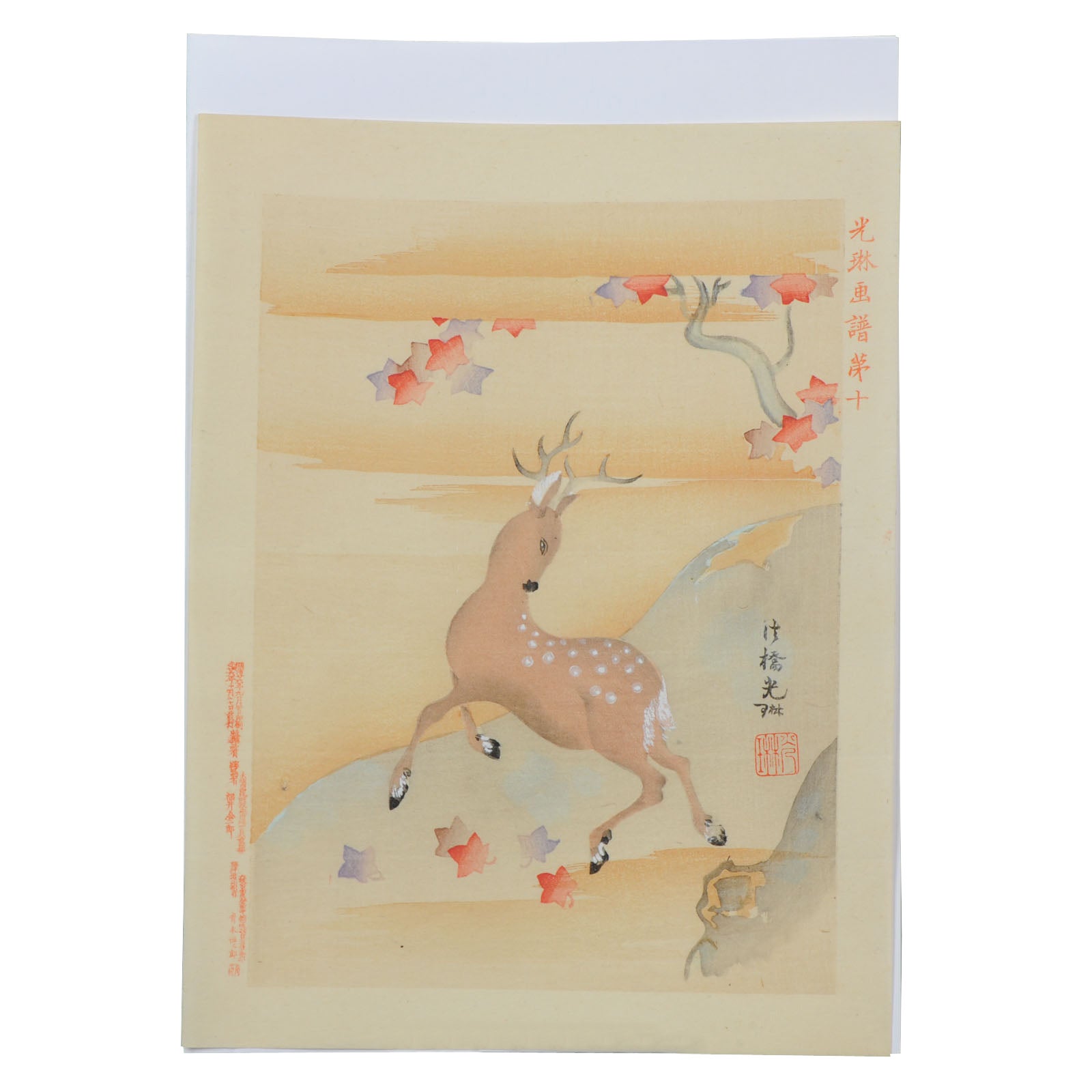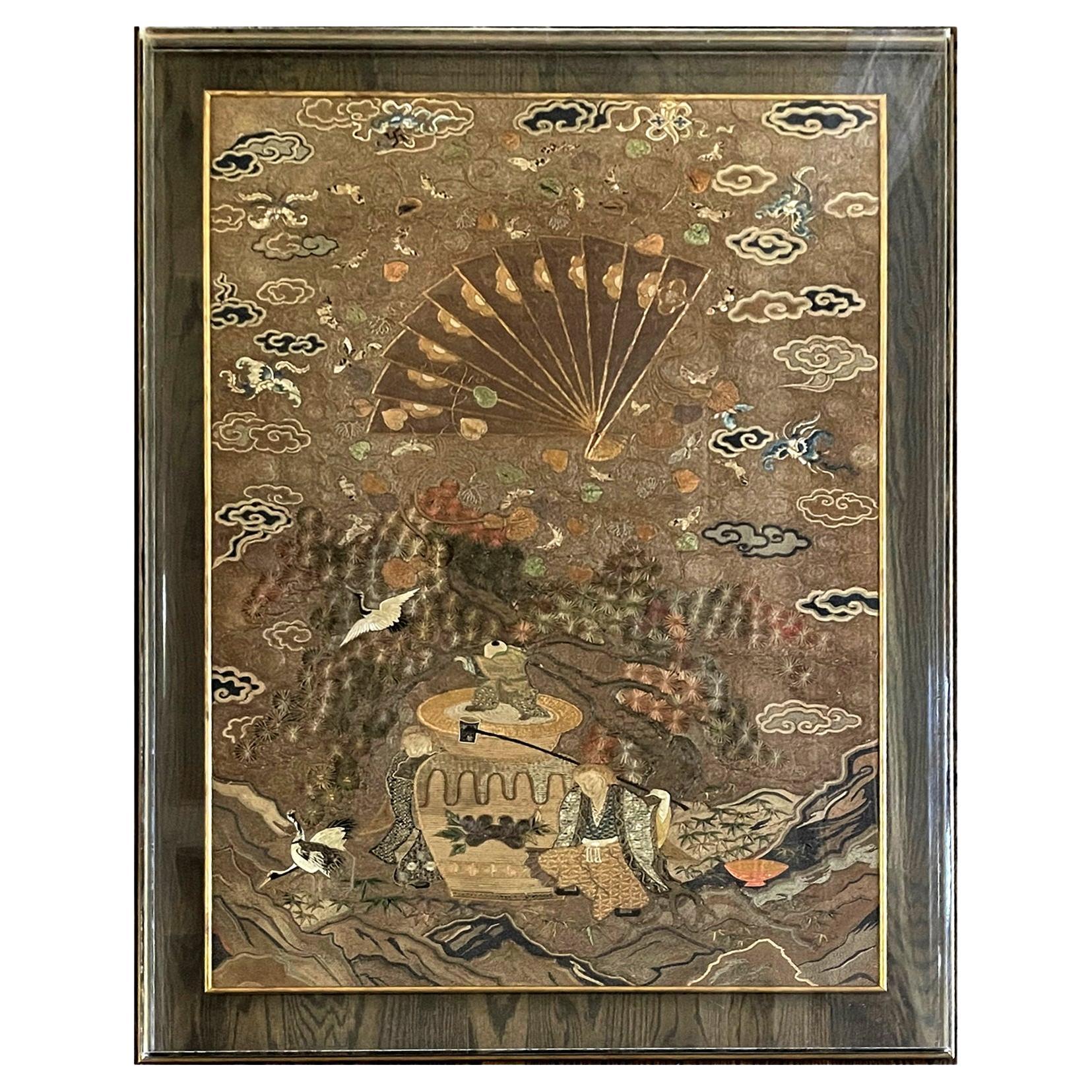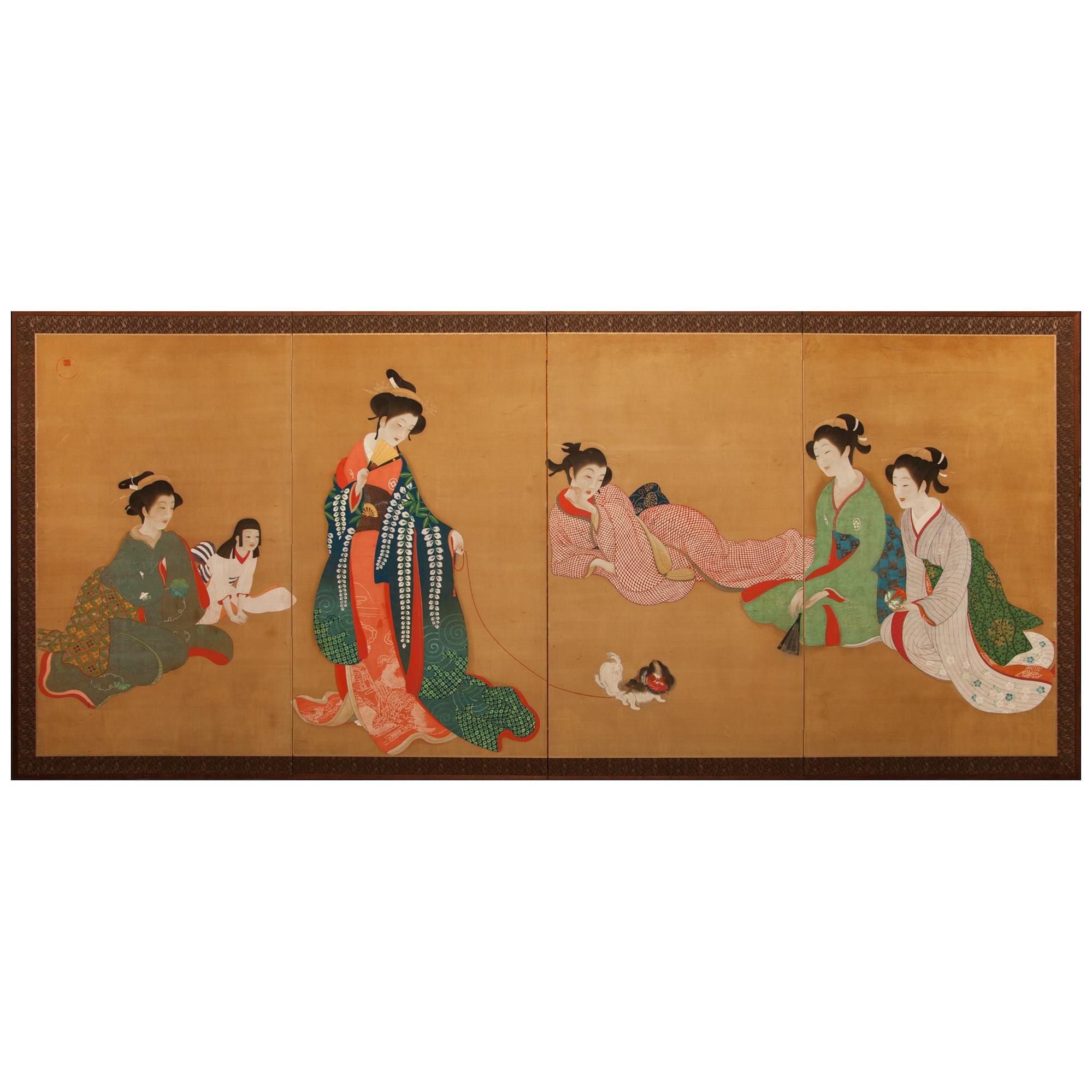Items Similar to Fine Japanese Meiji Period Water Color on Silk of Monkeys
Want more images or videos?
Request additional images or videos from the seller
1 of 9
Fine Japanese Meiji Period Water Color on Silk of Monkeys
About the Item
A wonderful fine quality Japanese Meiji period (1868-1912) water color on silk of seven monkeys climbing and playing on a rock face with trailing foliage. Set in an ivory color and gilded frame. Measures: 140 cm(55”).
- Dimensions:Height: 55.12 in (140 cm)Width: 25.99 in (66 cm)Depth: 3.15 in (8 cm)
- Style:Japonisme (Of the Period)
- Materials and Techniques:
- Place of Origin:
- Period:
- Date of Manufacture:1900
- Condition:Wear consistent with age and use.
- Seller Location:Brighton, GB
- Reference Number:
About the Seller
5.0
Platinum Seller
These expertly vetted sellers are 1stDibs' most experienced sellers and are rated highest by our customers.
1stDibs seller since 2015
440 sales on 1stDibs
Typical response time: <1 hour
Associations
LAPADA - The Association of Arts & Antiques Dealers
- ShippingRetrieving quote...Ships From: Brighton, United Kingdom
- Return PolicyA return for this item may be initiated within 3 days of delivery.
More From This SellerView All
- Fine quality Meiji period Japanese Cloisonné vase.Located in Brighton, SussexA fine quality late 19th Century Meiji period (1868-1912) Japanese cloisonné enamel vase depicting exotic orchids against a cobalt blue background. Batch 75. 57154. UUYZNCategory
Antique 1890s Japanese Vases
MaterialsEnamel
- Japanese Lacquer Meiji Period Cabinet on Stand, circa 1890Located in Brighton, SussexA exquisite, fine quality Meiji period (1868-1912) Japanese black lacquer cabinet on stand with wonderful scrolling gilded decoration. H...Category
Antique Late 19th Century Japanese Japonisme Lacquer
MaterialsLacquer
- Japanese Meiji Period Bronze Ox with Boy on Its BackLocated in Brighton, SussexA very amusing 19th century (Meiji period 1868-1912) Japanese bronze statue of an ox with a young boy sitting on its back. Signed.Category
Antique Late 19th Century Japanese Japonisme Animal Sculptures
MaterialsBronze
- Pair of Japanese Meiji Period Bronze and Gilt VasesBy Zo Miyao 1Located in Brighton, SussexPair of fine quality Japanese Meiji period (1868-1912) patinated bronze Miyao style gold and silver overlay two handled vases, each with twin handles, classical motif decoration with...Category
Antique Late 19th Century Japanese Japonisme Vases
MaterialsBronze
- Meiji Period Bronze Study of Monkeys Playing / LampLocated in Brighton, SussexA fine quality Meiji period (1868-1912) bronze study of Monkeys playing. Converted to a lamp.Category
Antique 19th Century Japanese Table Lamps
MaterialsBronze
- Large Japanese Meiji Period Bronze Koro, circa 1880Located in Brighton, SussexA very large and impressive good quality Japanese Meiji period (1868-1912) patinated bronze Koro. Having wonderful mythical dragon handles, a Peacock finial, an Eagle in a tree top and a Sea God under the waves...Category
Antique Late 19th Century Japanese Japonisme Animal Sculptures
MaterialsBronze
You May Also Like
- Japanese Showa Period Peacocks Painted on SilkLocated in Rio Vista, CAColorful Japanese ink and color on silk Showa painting of a pair of peacocks. Vivid colors and beautiful details with a signature and seal on right side bottom. Framed in a midcentur...Category
20th Century Japanese Showa Paintings and Screens
MaterialsSilk, Plexiglass, Paper, Wood
- Japanese Silk Scroll Painting of Moneys Edo Period Mori TetsuzanLocated in Atlanta, GAA Japanese mounted vertical hanging scroll painting by Mori Tetsuzan (Japanese, 1775-1841) circa 19th century Edo period. The watercolor and ink on silk ...Category
Antique 19th Century Japanese Japonisme Paintings and Screens
MaterialsSilk, Paper
- Antique Japanese Painting Japan Meiji Period Dear in WinterLocated in Amsterdam, Noord HollandAntique Japanese Painting Japan Meiji Period Dear in Winter. A very nice blockprint. Additional information: Type: Paintings, Scrolls & Pri...Category
Antique 19th Century Japanese Paintings
- Japanese Silk Embroidery Tapestry Meiji PeriodLocated in Atlanta, GAA spectacular Japanese embroidered silk panel beautifully presented in a gilt frame suspended in a lucite shadow box with gilt wood border. The silk picture is dated to 1890-1910s toward the end of Meiji Period, when Japanese started to participate international expose by presenting its best art and craft. Elaborate embroidered silk tapestry like this was very popular among westerners due to its superb craftmanship and also exotic subject matter that was often derived from classic Japanese folklore, mythology and various motifs. The tapestry on offer is such an example. It depicts an old couple...Category
Antique 1890s Japanese Japonisme Textiles
MaterialsFabric, Silk, Lucite
- Meiji Period Japanese Four Panel Screen Bijin At LeisureLocated in Hudson, NYJapanese four panel screen: Bijin At Leisure. Ladies in a tea house with a small dog. Seal reads "Ensan dai" (drawn by Ensan). Meiji Period (1868 - 1912) pa...Category
Antique Late 19th Century Japanese Meiji Paintings and Screens
MaterialsSilk, Wood
- Antique hanging scroll of Japanese cat/Late Edo-Meiji period/Cat paintingLocated in Sammu-shi, ChibaThis is a picture of a cat drawn by a person named "Toshizumi Nitta" from the end of the Edo period to the beginning of the Meiji period. She is a very simple and cute cat. He is a vassal of the Tokugawa Shogunate, born in Ota City, Gunma Prefecture (southern part of Gunma Prefecture). He was related to the Tokugawa family and lived in a large mansion in the Ota clan in Gunma prefecture. However, the Nitta family's territory was very small, and they were by no means a wealthy vassal. He seems to have lived quite poorly. So he painted cats and sold them to people. The Nitta family continued to draw pictures of this cat for four generations. "Nitta toshizumi" is equivalent to the fourth generation. During the Edo period, sericulture was thriving in the Kanto region. Cats were said to be the gods of silkworms, as they drive away mice, the natural enemies of silkworms. It was the Nitta family who drew such a cat on paper, pasted it in the silkworm chamber, and sold it as a mouse repellent. There were also other monks who painted pictures of cats, but the Nitta family in particular was related to the Tokugawa family, so people believed that paintings of cats had special powers. , a lot of paintings...Category
Antique Late 19th Century Japanese Edo Paintings
MaterialsPaper
Recently Viewed
View AllMore Ways To Browse
Japanese Ivory
Antique Japanese Painting On Silk
Antique Japanese Paintings On Silk
Meiji Silk
Japanese Silk Painting 19th Century
19th Japan Silk Paint
Framed Japanese Silk Paintings
Antique Japanese Ivory
19th Century Japanese Ivory
Japanese 19th Century Meiji Period Silk Painting
Meiji Ivory
Meiji Monkey
Japanese Water Color Silk Framed Color Color Painting
Morgan Masterpiece
Used White Tablecloths
19th Century French Street Oil Painting
Child Reading
Chinese Pith Paper Paintings





